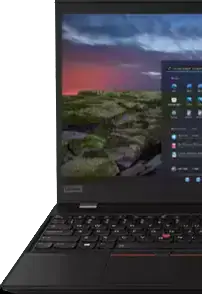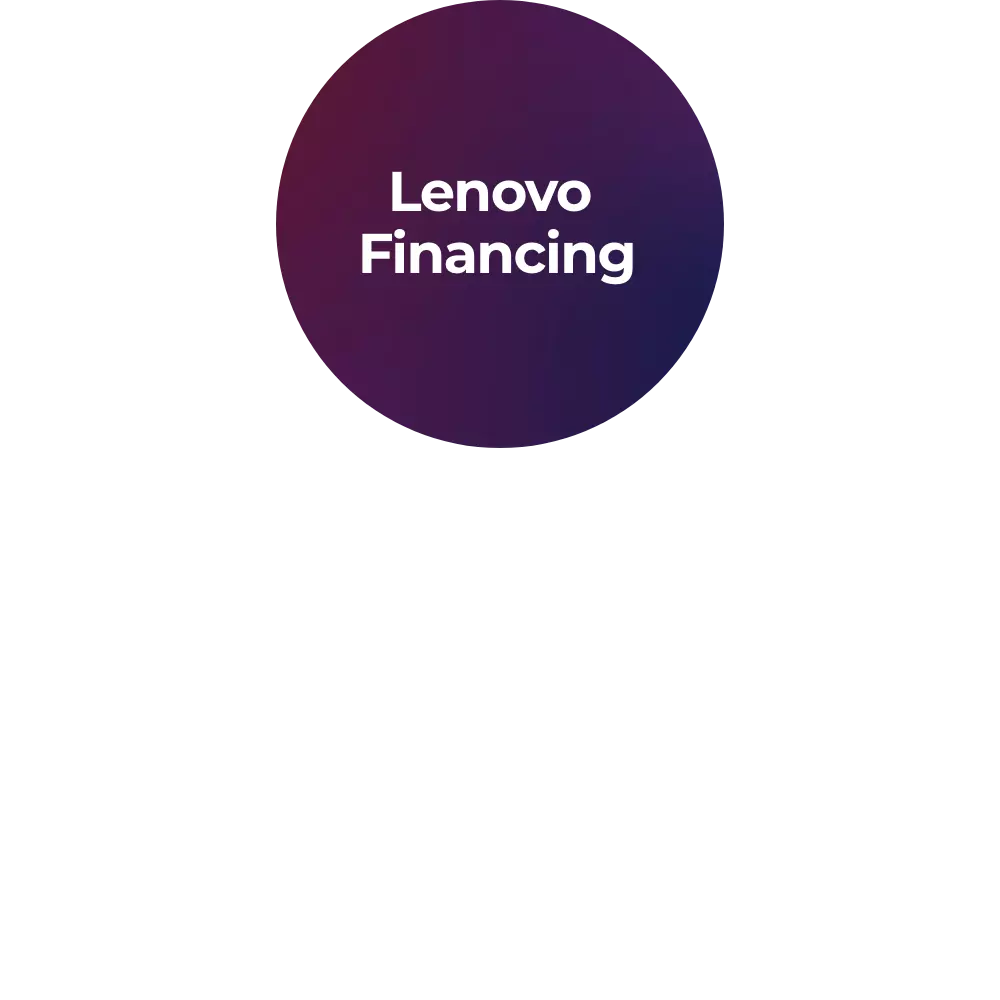What is a GPU?
Graphics Processing Units (GPUs) are an integral component of modern computing. GPUs provide the necessary power for complex calculations and processing, allowing developers to create more powerful applications with higher performance and better visuals. But what do GPUs do? Let’s look at the world of GPUs and how they work.
A GPU, or graphics processing unit, is a specialized type of processor designed specifically for performing computational operations associated with computer graphics and video processing. It is an electronic circuit that processes graphical data by executing small instructions called “shaders” on one or more “cores”. The cores are all connected in parallel, enabling them to process large amounts of data simultaneously.
How do GPUs and CPUs work together in computing systems?
CPUs (central processing units), which are found in every computer, are designed to handle general-purpose tasks such as running applications and managing system resources. On the other hand, GPUs are optimized for specific tasks such as rendering 3D graphics and video decoding.
CPUs have fewer cores than GPUs, but each core is capable of handling more complex instructions. This means that CPUs can handle sequential tasks more efficiently than GPUs, but GPUs outperform CPUs when it comes to parallel tasks like image rendering or video encoding/decoding.
How CPUs and GPUs Work Together?
In modern computing systems, CPUs and GPUs complement each other to enhance overall performance. While a CPU manages the system's operation and handles tasks sequentially, a GPU steps in to accelerate graphics-intensive workloads. This division of labor means that by working in tandem, they deliver a smoother and more efficient computing experience.
CPUs continually evolve with innovations such as faster clock speeds and additional cores, improving their ability to manage a wide array of tasks. Meanwhile, GPUs are specifically engineered to boost performance in tasks that require massive parallel processing, like gaming and complex simulations.
Understanding the distinct roles of CPUs and GPUs can be crucial when selecting a system. By leveraging the strengths of both, you can achieve the best performance for your specific needs, whether it's high-end gaming, video editing, or running demanding applications.
How can understanding CPU and GPU roles help consumers?
By understanding the distinct functions of CPUs and GPUs, consumers can make more informed choices when purchasing computer systems. This knowledge can help them select the right combination of components to meet their specific needs, whether for gaming, content creation, or general computing.
What specific roles do CPUs and GPUs play in a computing system?
CPUs are responsible for executing a wide range of general-purpose tasks, making them versatile for different applications. In contrast, GPUs are tailored for handling graphics-intensive workloads, such as rendering and decoding, making them essential for tasks requiring high levels of parallel processing.
How have CPUs and GPUs evolved?
Over time, CPUs have advanced through innovations in architecture, increased clock speeds, and the addition of more cores. Meanwhile, GPUs have developed as specialized components to enhance computer graphics performance, serving as a complementary technology to CPUs.
What is the distinction between a GPU and a graphics card?
When exploring computer graphics, it's easy to confuse a GPU with a graphics card. However, these two terms are not synonymous.
GPU: A GPU, or Graphics Processing Unit, is a specialized processor designed to accelerate graphics rendering. It's responsible for drawing images on your screen and handling complex visual tasks. Think of the GPU as the brain of operations when it comes to processing graphics tasks. It handles computations necessary for rendering images, animations, and video at high speeds.
Graphics Card:A graphics card, on the other hand, is the complete hardware unit that not only includes the GPU but also other components that ensure its proper function. Besides the GPU, a graphics card typically contains:
- Video Memory (VRAM):Temporary storage that allows the GPU to access graphics data quickly.
- Cooling Solutions:Heat sinks and fans to manage temperature.
- Power Management:Connectors and circuitry to manage power supply from the computer.
- Output Interfaces:Ports like HDMI, DisplayPort, or DVI to connect monitors and other displays.
Much like how a CPU is embedded in a motherboard, the GPU is housed within the graphics card. The graphics card is thus an all-in-one solution, integrating various components that allow the GPU to perform optimally and interface seamlessly with the rest of the computer system.
What applications can benefit from the programmability of modern GPUs?
GPUs can be used for a variety of tasks including image and video editing, gaming, computer-aided design (CAD) software, machine learning algorithms, scientific computing simulations, 3D rendering, artificial intelligence (AI), augmented reality (AR), virtual reality (VR), cryptocurrency mining, and much more.
Their extraordinary computational capability makes them particularly valuable in AI and machine learning fields. This is because GPUs excel at handling workloads that benefit from their highly parallel processing nature, such as image recognition and deep learning algorithms. Many of today’s advanced AI technologies rely on the seamless collaboration between GPUs and CPUs to deliver efficient performance.
They are also becoming increasingly popular in cloud computing environments due to their ability to process large amounts of data quickly without sacrificing performance or quality. An increasing number of companies are utilizing the power of GPU clusters to increase the speed at which they can train AI models or render complex scenes in real-time applications such as video games or virtual reality experiences.
In summary, the programmability of modern GPUs is revolutionizing various industries by enhancing the efficiency and speed of numerous applications, particularly in image recognition and deep learning, making them indispensable in both traditional and cutting-edge technology sectors.
Why are GPUs particularly suited for certain types of AI tasks?
GPUs excel in AI tasks because they can efficiently handle the simultaneous processing of numerous data points, which is a key requirement in tasks like image recognition and other parallel computation-intensive operations.
What is the relationship between GPUs and CPUs in deep learning?
In deep learning, GPUs and CPUs work together, with GPUs handling the heavy computational tasks due to their parallel processing power, while CPUs manage the overall task coordination and less intensive computations.
What role do GPUs play in machine learning and AI applications?
An increasing number of companies are utilizing the power of GPU clusters in order to increase the speed at which they can train AI models or render complex scenes in real-time applications such as video games or virtual reality experiences. These GPUs are integral to the machine learning landscape due to their extraordinary computational capabilities.
Why GPUs Matter in AI
- Parallel Processing Power: GPUs excel at handling highly parallel tasks, making them ideal for workloads like image recognition and deep learning. This parallel processing power enables them to deliver significant acceleration, which is crucial for quickly training AI models.
- Collaboration with CPUs:Modern deep learning technologies often rely on GPUs working in tandem with CPUs. This collaboration leverages the strengths of both types of processors, with GPUs taking on the heavy lifting of parallel computation while CPUs handle sequential tasks.
- Real-Time Applications:The ability to render complex scenes in real-time is essential for industries like gaming and virtual reality. GPUs' rapid processing power allows for more immersive and responsive experiences, enhancing user engagement.
By harnessing these capabilities, companies can push the boundaries of what's possible in AI and machine learning, driving innovation across various sectors.
What makes GPUs suitable for machine learning tasks?
GPUs excel in machine learning due to their immense computational power and ability to perform numerous calculations simultaneously, making them ideal for tasks that require parallel processing, such as analyzing images.
How do GPUs enhance video editing and content creation?
GPUs can be used for a variety of tasks including image and video editing, gaming, computer-aided design (CAD) software, machine learning algorithms, scientific computing simulations, 3D rendering, artificial intelligence (AI), augmented reality (AR), virtual reality (VR), cryptocurrency mining, and much more.
They are also becoming increasingly popular in cloud computing environments due to their ability to process large amounts of data quickly without sacrificing performance or quality.
Enhanced Video Editing and Content Creation
For years, creative professionals have grappled with long rendering times that hindered their workflow. Today, the parallel processing power of GPUs significantly accelerates these tasks, making video and image rendering faster and more efficient. Built-in AI capabilities and advanced acceleration are key to achieving seamless high-definition formats, allowing creators to focus more on their creative process than on technical delays.
An increasing number of companies are utilizing the power of GPU clusters to boost the speed at which they can train AI models or render complex scenes in real-time applications such as video games or virtual reality experiences. These clusters enable a more fluid and immersive content creation experience.
GPUs also have their own memory which helps them access data faster than a CPU would be able to do on its own. This memory allows the GPU to store instructions in its cache so it can execute them quickly when needed. Furthermore, GPUs contain specialized hardware, including texture mapping units and vertex shaders, which elevate their performance even further.
Professional and Immersive Experiences
For professional content creators, GPUs enhance performance and memory bandwidth, supporting multiple large displays with Ultra High Definition (UHD), ultrawide UHD, and high dynamic range (HDR). This support is crucial for artists and designers requiring precision and clarity in their work.
Whether it's crafting stunning visuals or engaging in immersive gaming, the advanced graphics technologies offered by GPUs power a premium experience. This not only benefits portable devices but also drives innovation across desktops and workstations, enabling creators to push the boundaries of digital content creation.
What advancements have been made in GPU technology for data centres?
Recent advancements in GPU technology have significantly elevated the capabilities of data centers, particularly in processing complex tasks. Modern GPUs in data centers now integrate sophisticated visual experiences and offer robust performance for demanding operations.
By incorporating integrated graphics, today's GPUs provide exceptional support for visual tasks, ensuring enhanced clarity and depth in media renderings. This functionality is essential as data centers increasingly handle complex graphic demands, from high-definition video streaming to intricate 3D modeling.
Boosted Performance for Complex Operations
The latest GPU advancements have led to remarkable improvements in handling parallel operations. This is crucial for tasks such as AI processing, where concurrent data handling is key. These GPUs are designed for optimal performance in machine learning, enabling faster computations for algorithm training and data analysis.
Versatility in Use Cases
Data center GPUs now support a wide array of applications, transcending traditional uses. They are vital in media analytics, processing vast amounts of video data rapidly and efficiently. Furthermore, their capabilities extend to 3D rendering, which is necessary for industries delving into cloud gaming and immersive content creation.
In summary, modern data center GPUs have evolved to provide better support for parallel operations and are integral to tasks involving AI, media analytics, and 3D rendering. This evolution makes them indispensable for cutting-edge applications like machine learning and high-performance content delivery.
What are discrete graphics and why are they used for resource-intensive applications?
There are two main types of GPUs: integrated and dedicated graphics cards. Integrated graphics cards come installed on most motherboards and use system RAM as their primary memory source, while dedicated graphics cards have their own onboard memory (VRAM) and are capable of delivering higher performance than integrated cards.
For more resource-intensive applications with extensive performance demands, a discrete GPU, often referred to as a dedicated graphics card, is better suited. These GPUs enhance processing power significantly, making them ideal for tasks such as 4K gaming or intensive video editing. However, they come with the trade-off of increased energy consumption and heat production, necessitating dedicated cooling systems to maintain optimal performance.
Dedicated cards can be further divided into high-end gaming cards and budget-friendly entry-level cards depending on their performance levels and features. High-end gaming cards offer unparalleled performance for demanding applications, while entry-level budget cards provide more than enough power for casual users who just want to watch movies or browse the internet without investing heavily in hardware upgrades.
Both types of dedicated GPUs can be further divided into categories such as AMD Radeon™ or NVIDIA® GeForce®, depending on their manufacturer specifications. This categorization provides users with options tailored to specific needs and performance expectations, ensuring that whether for gaming, professional work, or casual use, there's a suitable discrete GPU available.
Why are discrete GPUs used for resource-intensive applications?
Discrete GPUs are ideal for resource-intensive applications because they provide additional processing power required for demanding tasks, offering superior performance compared to integrated options.
What are integrated graphics and how do they function in a computer?
There are two main types of GPUs: integrated and dedicated graphics cards. Integrated graphics cards come installed on most motherboards and use system RAM as their primary memory source, while dedicated graphics cards have their own onboard memory (VRAM) and are capable of delivering higher performance than integrated cards.
Understanding Integrated Graphics
Integrated graphics are a common feature in many modern CPUs. These GPUs are built directly into the processor, allowing for more compact and streamlined computer designs. By integrating the GPU with the CPU, manufacturers can create thinner and lighter systems that consume less power, making them ideal for laptops and other portable devices.
Functionality and Benefits
Integrated graphics utilize the system's main RAM, which can limit their performance compared to dedicated graphics cards. However, this integration reduces overall system costs and power consumption, offering an efficient solution for everyday tasks such as web browsing, streaming, and office applications.
By striking a balance between performance and efficiency, integrated graphics provide a cost-effective solution for users who do not require the high-end capabilities of dedicated graphics cards.
What benefits do integrated graphics provide in terms of system design?
They contribute to creating slimmer and lighter devices by eliminating the bulk of additional components.
How are integrated graphics physically incorporated into a computer system?
Integrated graphics are built directly into the CPU and share space on the motherboard, eliminating the need for a separate graphics card.
Benefits of using GPUs
The use of GPUs can greatly reduce the amount of time needed to complete certain tasks; this makes them particularly useful for applications where speed is critical such as gaming or scientific computing. Additionally, using GPUs can help reduce energy costs since they consume less power compared to CPUs while still providing superior performance.
Finally, GPUs can help develop more realistic visuals thanks to their powerful graphical capabilities; this makes them an essential component in modern video games and other applications that require high-quality images or animations.
Do I need a GPU?
The answer depends on what kind of activities you plan to do with your computer. If you're just using your PC for basic tasks such as web browsing or watching videos online, then you probably won't benefit from investing in a dedicated graphics card—your integrated graphics chip will suffice.
On the other hand, if you plan on doing more intensive tasks such as gaming or video editing then having a dedicated GPU can make all the difference in terms of performance and efficiency.
Why are GPUs important?
GPUs have become increasingly important over the years due to the growing complexity of modern video games and other graphical applications. Without a powerful GPU, your computer would struggle to display complex visual effects such as shadows, lighting, textures, reflections, and more. As game developers continue to push the boundaries of what is possible with graphics technology, having a powerful GPU becomes even more critical for smooth performance.
To sum it up, GPUs are highly specialized processors designed to process data quickly and efficiently while producing high-quality visuals at the same time. They offer many benefits over traditional CPUs including reduced energy costs and improved speeds; this makes them essential components in modern computing devices like laptops, game consoles, and smartphones. Whether you’re playing games or working on complex computations, having a powerful GPU will ensure you get the most out of your device.















